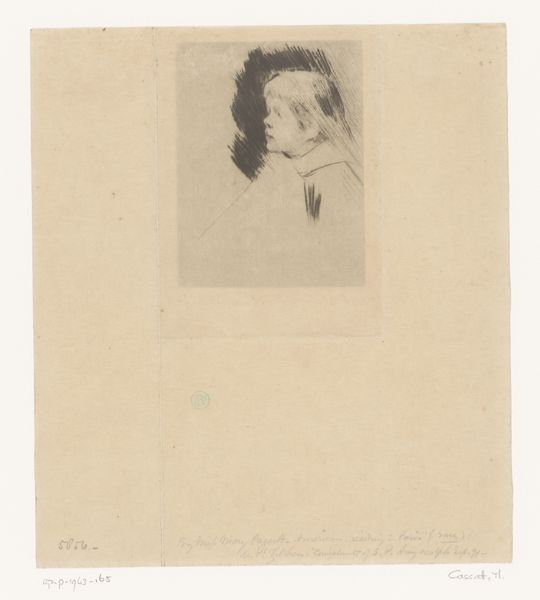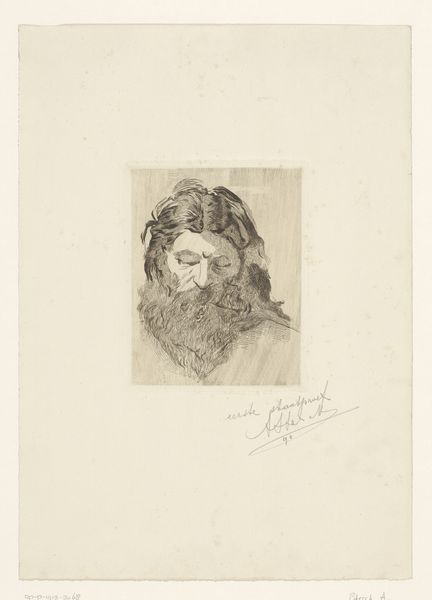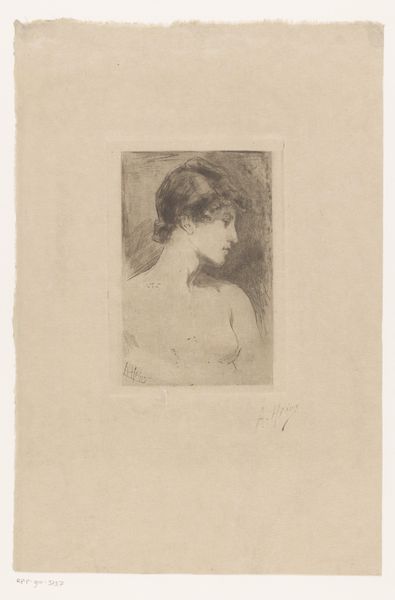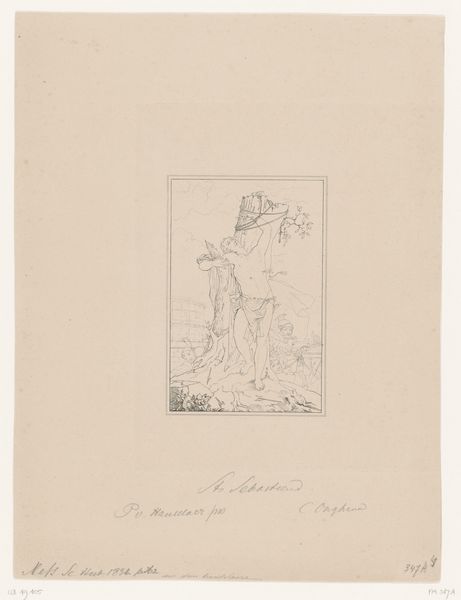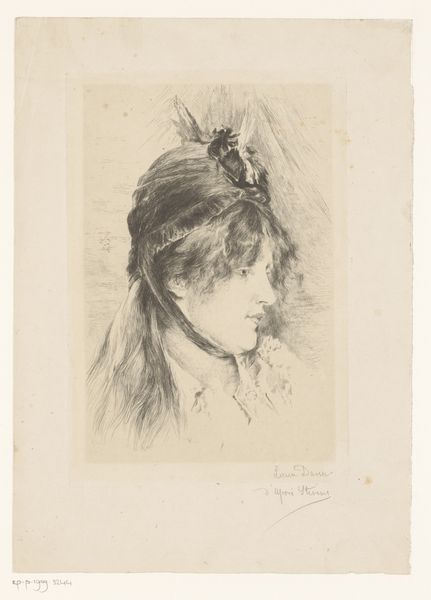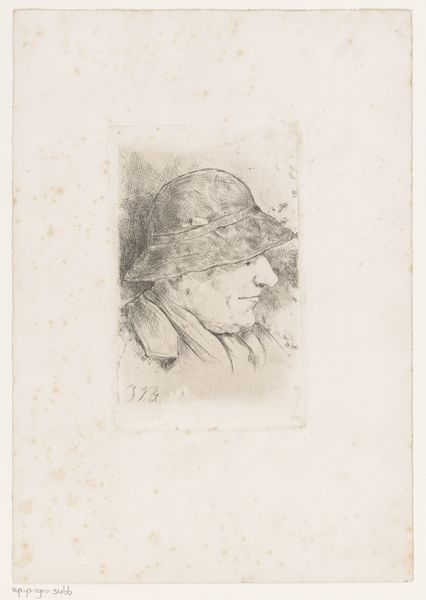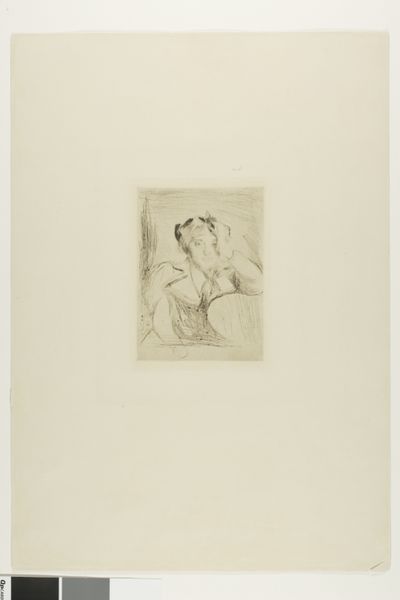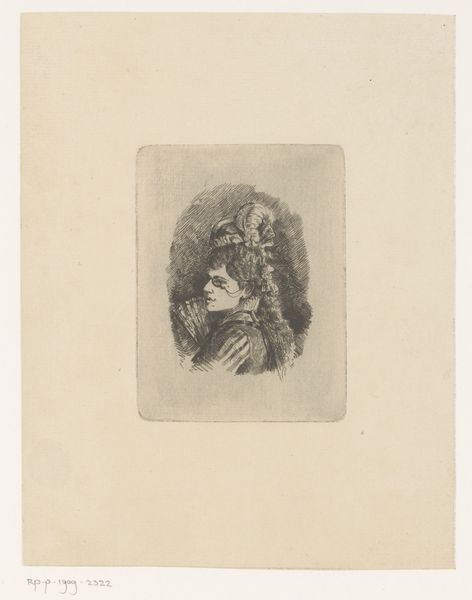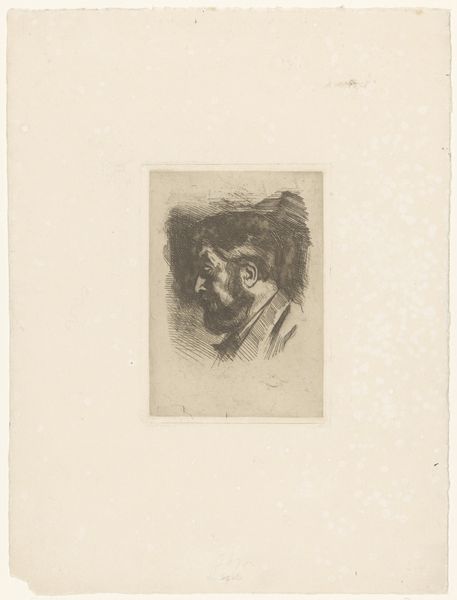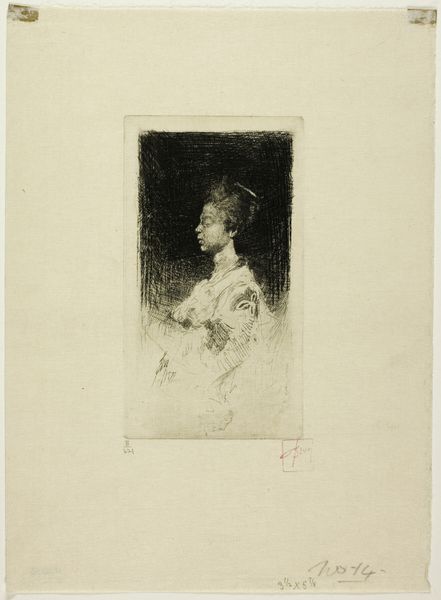
print, etching, paper
#
portrait
# print
#
etching
#
old engraving style
#
paper
#
personal sketchbook
#
realism
Dimensions: height 84 mm, width 53 mm
Copyright: Rijks Museum: Open Domain
Curator: Before us is "Lezende vrouw," a captivating etching on paper attributed to Florent Nicolas Crabeels, likely created sometime between 1839 and 1896. Editor: Ah, she looks quite the proper sort, doesn't she? But there's something ever so slightly…melancholy about the curve of her neck. Like a rainy Tuesday. Curator: Indeed. Crabeels' choice of etching as a medium lends itself to the delicate linework which describes the subtle fall of light on her form and attire. Note how the hatch marks are employed to render tone. Editor: It feels intimate, you know? Like stumbling upon a quiet moment you weren't meant to see. The rough quality makes her look caught in a fleeting thought. Curator: The composition directs our gaze specifically. Crabeels masterfully guides our focus to the central subject, diminishing extraneous detail for the most impactful presentation. Editor: I wonder what she's reading? Poetry, perhaps? Her features, even in this modest scale, imply the turning of complex emotional depths. Curator: Considering the timeframe and style, it would likely be a portrait study created for further artistic exploration, following Realist ideals. Editor: Is it just me, or is there also a hint of defiance in her profile? Almost daring you to interrupt her. She seems fiercely engaged with that book. I want to know her story. Curator: Whether it encapsulates defiant character or just passing demeanor, the technical refinement employed by Crabeels establishes the foundations of potent and memorable representation. Editor: It reminds us, perhaps, that within art, as in life, beauty can often reside not only in overt drama, but in these fleeting, intimate reflections of humanity captured upon the page. Thank you, Florent. Curator: Indeed, a pertinent consideration, even at a distance of over one-and-a-half centuries.
Comments
No comments
Be the first to comment and join the conversation on the ultimate creative platform.

